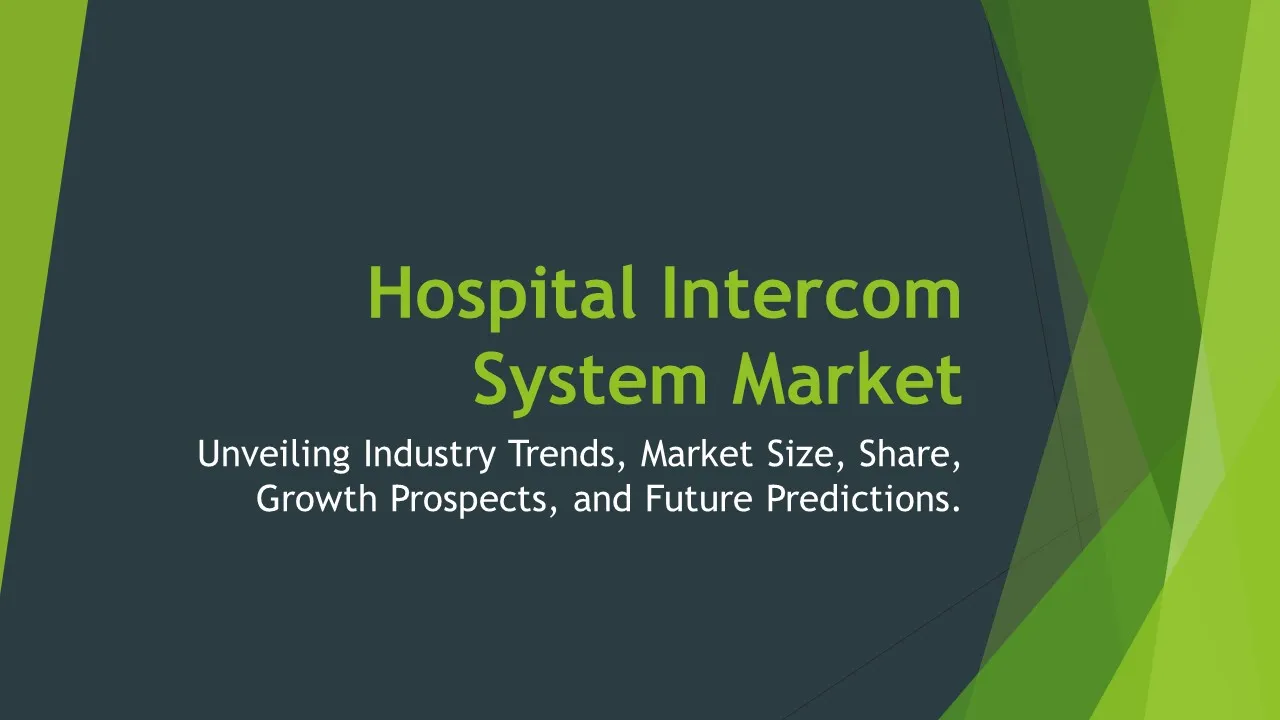Internet of Everything IoE
Internet of Everything IoE Market Segments - by Component Type (Hardware, Software, Services), Technology (Sensors, Connectivity Technologies, Data Analytics, Security), Industry Vertical (Manufacturing, Healthcare, Transportation, Retail, Energy), End-User (Enterprises, Government, Consumers), and Region (North America, Europe, Asia Pacific, Latin America, Middle East & Africa) - Global Industry Analysis, Growth, Share, Size, Trends, and Forecast 2025-2035
- Report Preview
- Table Of Content
- Segments
- Methodology
Internet of Everything IoE Market Outlook
The global Internet of Everything (IoE) market is anticipated to reach approximately $8 trillion by 2035, growing at a compound annual growth rate (CAGR) of around 25% during the forecast period from 2025 to 2035. This rapid growth can be attributed to the increasing adoption of connected devices across various sectors, the rise of smart cities, and the growing demand for real-time data analytics. Furthermore, the integration of advanced technologies such as artificial intelligence (AI) and machine learning (ML) into IoE systems is significantly enhancing operational efficiency and decision-making processes. Additionally, the proliferation of 5G networks is expected to facilitate higher data transmission speeds, thus improving the overall performance and scalability of IoE applications. The convergence of digital and physical systems is not only transforming industries but also creating new business models that leverage real-time insights and automation.
Growth Factor of the Market
The growth of the Internet of Everything (IoE) market is largely driven by the increasing interconnectivity of devices and the need for enhanced data processing capabilities. As more devices become internet-enabled, the demand for seamless communication and data exchange between these devices has surged. This has led to the development of more sophisticated hardware and software solutions that support IoE applications. Moreover, advancements in data analytics are empowering organizations to extract valuable insights from vast amounts of collected data, enabling informed decision-making. Government initiatives aimed at promoting smart infrastructure and sustainable energy solutions are further catalyzing the adoption of IoE technologies across various sectors. The rising importance of maintaining operational efficiency and improving customer experiences is compelling organizations to invest in IoE systems, ultimately contributing to market growth.
Key Highlights of the Market
- Projected to reach approximately $8 trillion by 2035.
- Expected CAGR of around 25% from 2025 to 2035.
- Strong growth driven by smart city initiatives and connected devices.
- Rise of advanced technologies like AI and ML enhancing IoE systems.
- 5G networks facilitating improved data transmission speeds.
By Component Type
Hardware :
The hardware segment of the Internet of Everything (IoE) market is a crucial element, encompassing devices such as sensors, actuators, and connected appliances that form the backbone of IoE infrastructure. Hardware advancements are driving the miniaturization and energy efficiency of devices, enabling their integration into a wide array of applications, from industrial machinery to consumer electronics. These devices collect, transmit, and process data, forming an interconnected ecosystem that facilitates real-time decision making. The increasing demand for smart home devices and wearables is further propelling the hardware segment's growth. Additionally, innovations in semiconductor technology are enhancing the performance and capabilities of IoE hardware, making it more reliable and cost-effective. As organizations strive for digital transformation, robust hardware solutions will be essential in realizing the full potential of IoE applications.
Software :
Software is another pivotal component of the IoE market, providing the necessary platforms and applications for data management, analytics, and device interoperability. The software side of IoE is characterized by advancements in cloud computing and edge computing technologies that enable seamless data processing and storage. Organizations utilize robust software solutions to gain real-time insights, optimize operations, and enhance customer experiences. With the rise of artificial intelligence and machine learning, software applications are becoming increasingly sophisticated, allowing for predictive analytics and automation in various processes. Furthermore, software security has gained significant attention as data privacy concerns escalate; thus, advanced security measures are being integrated into IoE software solutions. The software segment's growth will be driven by the ongoing need for scalable and flexible solutions that can adapt to the rapidly evolving IoE landscape.
Services :
The services segment in the Internet of Everything market encompasses a wide range of offerings, including consulting, integration, and managed services aimed at optimizing IoE deployments. As organizations increasingly recognize the value of IoE, they are seeking expert support to navigate the complexities of implementation and management. Service providers play a critical role in ensuring smooth integration between various IoE components, facilitating communication among devices, and managing data flow. The demand for ongoing technical support and maintenance is also rising as organizations seek to maximize the longevity and effectiveness of their IoE systems. Furthermore, the emergence of IoT-as-a-Service is allowing businesses to leverage IoE technologies without the burden of large upfront investments. Consequently, the services segment is poised for significant growth as more enterprises seek to operationalize IoE solutions effectively.
By Technology
Sensors :
Sensors are the fundamental building blocks of the Internet of Everything (IoE), providing the data required for informed decision-making and automation. They gather information about the physical environment, such as temperature, motion, humidity, and light, enabling real-time monitoring and control of various processes in industries like manufacturing, healthcare, and transportation. The rapid advancements in sensor technology, including miniaturization and increased accuracy, are driving their adoption across multiple applications. The proliferation of smart devices equipped with advanced sensors allows for enhanced functionalities, such as predictive maintenance and environmental monitoring. As industries increasingly prioritize efficiency and sustainability, the demand for innovative sensor technologies is expected to surge, further propelling the growth of the IoE market.
Connectivity Technologies :
Connectivity technologies are vital for establishing communication between devices within the Internet of Everything ecosystem. These technologies facilitate the transfer of data among devices, enabling seamless interaction and coordination. The evolution of connectivity protocols, such as Wi-Fi, Bluetooth, Zigbee, and 5G, has significantly enhanced the performance and reliability of IoE systems. The advent of 5G technology, in particular, promises to revolutionize IoE by providing ultra-fast data transmission speeds and low latency, making it ideal for mission-critical applications. As organizations strive for increased connectivity and data exchange efficiencies, the adoption of advanced connectivity technologies will play a pivotal role in driving the IoE market forward. Enhanced connectivity will also support the growth of smart cities, autonomous vehicles, and other innovative applications that rely on real-time data exchange.
Data Analytics :
Data analytics is a cornerstone of the Internet of Everything, enabling organizations to derive actionable insights from the vast amounts of data collected by IoE devices. With the increasing volume and variety of data generated, effective data analytics solutions are critical for transforming raw data into meaningful information. Advanced analytics techniques, including machine learning and artificial intelligence, are enhancing the capabilities of IoE systems, allowing for predictive analytics, anomaly detection, and improved decision-making. Organizations can leverage these insights to optimize operations, enhance customer experiences, and drive innovation across various sectors. Furthermore, the demand for data-driven strategies is compelling businesses to invest in robust data analytics solutions, which will continue to fuel growth in the IoE market as companies seek competitive advantages through data utilization.
Security :
Security technologies are of paramount importance in the Internet of Everything landscape, as the interconnected nature of IoE systems introduces numerous vulnerabilities. Ensuring the integrity, confidentiality, and availability of data is essential for maintaining trust and compliance with regulatory requirements. Security solutions for IoE encompass various measures, including encryption, identity management, and intrusion detection systems, aimed at protecting devices and networks from cyber threats. As organizations increasingly adopt IoE technologies, concerns about data breaches and unauthorized access are escalating, highlighting the need for robust security frameworks. Consequently, investments in IoE security solutions are expected to rise, with organizations prioritizing the implementation of comprehensive security strategies to safeguard their IoE deployments and protect sensitive data.
By Industry Vertical
Manufacturing :
The manufacturing sector is one of the early adopters of Internet of Everything (IoE) technologies, utilizing connected devices and data analytics to enhance operational efficiencies and reduce costs. IoE solutions enable real-time monitoring of production processes, predictive maintenance of machinery, and improved supply chain management. As manufacturers seek to optimize production and minimize downtime, the integration of IoE technologies is becoming increasingly essential. Smart factories equipped with sensors and automation systems can streamline operations, reduce wastage, and respond rapidly to market demands. The growing trend toward Industry 4.0 is driving investments in IoE technologies, as manufacturers strive to leverage data for smarter decision-making and increased competitiveness in a rapidly evolving market.
Healthcare :
In the healthcare industry, the Internet of Everything (IoE) is revolutionizing patient care and hospital management by enabling the remote monitoring of patients and the seamless exchange of medical data. Connected devices, such as wearables and smart medical equipment, allow healthcare providers to track vital signs in real-time, improving patient outcomes and facilitating timely interventions. Furthermore, IoE technologies enhance operational efficiencies in hospitals by streamlining processes, reducing costs, and optimizing resource allocation. As healthcare organizations increasingly focus on patient-centric care and personalized treatments, the demand for IoE solutions is expected to rise significantly. The integration of data analytics into healthcare IoE applications also holds great promise, enabling predictive analytics and enhancing the ability to manage chronic diseases effectively.
Transportation :
The transportation sector is experiencing a significant transformation due to the implementation of Internet of Everything (IoE) technologies, which are enhancing fleet management, logistics, and passenger experiences. IoE solutions enable real-time tracking of vehicles, optimizing routes and reducing fuel consumption. Additionally, connected vehicles equipped with advanced sensors and communication systems are paving the way for autonomous driving and improved road safety. The integration of IoE technologies facilitates better traffic management, enabling city planners to reduce congestion and enhance urban mobility. As transportation networks evolve toward smart systems, the adoption of IoE technologies is expected to accelerate, contributing to the growth of the overall market. Moreover, the increasing emphasis on sustainable transportation solutions will drive further investment in IoE innovations.
Retail :
The retail industry is increasingly leveraging Internet of Everything (IoE) technologies to enhance customer experiences, optimize inventory management, and streamline operations. Connected devices enable retailers to gather valuable insights into consumer behavior, preferences, and purchasing patterns. This data-driven approach allows for personalized marketing strategies and improved customer engagement, ultimately driving sales growth. IoE solutions also facilitate efficient inventory management by providing real-time visibility into stock levels, reducing the risk of stockouts or overstocking. As retailers embrace omnichannel strategies and seek to improve operational efficiency, the demand for IoE technologies is expected to rise. Additionally, smart payment systems and connected storefronts are contributing to the transformation of retail operations, offering consumers seamless shopping experiences.
Energy :
The energy sector is at the forefront of adopting Internet of Everything (IoE) technologies to enhance resource management, optimize operations, and promote sustainability. IoE solutions enable real-time monitoring of energy consumption, helping organizations identify inefficiencies and reduce waste. Smart grids equipped with connected devices allow for better load management and demand response, ultimately leading to more efficient energy distribution. Furthermore, IoE technologies facilitate the integration of renewable energy sources into the grid, supporting the transition towards sustainable energy solutions. As governments and organizations prioritize energy efficiency and sustainability, the adoption of IoE technologies in the energy sector is expected to grow. This transformation will not only enhance operational efficiencies but also contribute to a more resilient and sustainable energy infrastructure.
By User
Enterprises :
Enterprises are one of the primary users of Internet of Everything (IoE) technologies, leveraging connected devices and data analytics to drive operational efficiencies and improve decision-making processes. By integrating IoE solutions into their operations, businesses can collect real-time data on various aspects, including supply chain management, production processes, and customer interactions. This data-driven approach enables organizations to identify inefficiencies, reduce costs, and enhance overall productivity. Additionally, IoE technologies facilitate better collaboration among teams and improved communication with customers, leading to enhanced customer experiences. As enterprises increasingly recognize the potential of IoE to transform their operations, the demand for innovative IoE solutions is expected to grow significantly, further stimulating market expansion.
Government :
Government entities are also significant users of Internet of Everything (IoE) technologies, utilizing connected systems to enhance public services, improve infrastructure, and promote sustainability. IoE solutions enable governments to monitor and manage urban environments, including traffic flow, waste management, and energy usage, leading to more efficient resource allocation. Smart city initiatives are at the forefront of this transformation, leveraging IoE technologies to create safer, more sustainable urban spaces. Furthermore, IoE applications facilitate improved citizen engagement by providing real-time information and services, ultimately enhancing the quality of life for residents. As governments prioritize digital transformation and smart solutions, the adoption of IoE technologies is expected to accelerate, contributing to the growth of the overall market.
Consumers :
Consumers are increasingly becoming active participants in the Internet of Everything (IoE) ecosystem, leveraging connected devices to enhance their daily lives and experiences. Smart home technologies, including connected appliances, lighting, and security systems, are becoming mainstream, allowing consumers to automate and control their environments remotely. Additionally, wearable devices, such as fitness trackers and smartwatches, enable individuals to monitor their health and wellness in real time. The growing emphasis on convenience, personalization, and enhanced quality of life is driving consumer demand for IoE products and services. As technology continues to evolve, the IoE market will witness increased consumer engagement, further propelling its growth. With manufacturers focusing on developing user-friendly and innovative solutions, the consumer segment will continue to play a crucial role in shaping the future of IoE technologies.
By Region
The regional analysis of the Internet of Everything (IoE) market reveals significant variations in adoption rates and growth potential across different geographic locations. North America holds a leading position in the IoE market, with a projected market share of approximately 35% by 2035. The region's robust technological infrastructure, coupled with the presence of key industry players, has facilitated the rapid adoption of IoE solutions across various sectors, including manufacturing, healthcare, and transportation. The CAGR for North America is expected to be around 28% during the forecast period, driven by increasing investments in smart city projects and connected devices. In Europe, the IoE market is also experiencing substantial growth, with an estimated share of 25% by 2035, as governments and organizations prioritize digital transformation and sustainability initiatives.
In the Asia Pacific region, the IoE market is set to witness remarkable growth, driven by rapid urbanization, increasing internet penetration, and a burgeoning industrial base. The region is expected to account for approximately 20% of the IoE market by 2035, with a projected CAGR of 30% during the forecast period. Countries such as China, India, and Japan are leading the charge, investing heavily in IoT infrastructure and smart manufacturing initiatives. Latin America and the Middle East & Africa are also emerging markets for IoE technologies, with their respective market shares expected to be around 10% and 5% by 2035. The increasing focus on improving urban infrastructure and enhancing service delivery in these regions will contribute to the growth of the IoE market, making it a global phenomenon.
Opportunities
The Internet of Everything (IoE) market presents vast opportunities for businesses and organizations to harness the power of interconnected devices and data analytics. One significant opportunity lies in the development of smart cities, where IoE technologies can be deployed to enhance urban infrastructure, improve public transportation systems, and optimize energy consumption. Governments worldwide are increasingly investing in smart city initiatives, recognizing the potential of IoE to improve the quality of life for residents and drive economic growth. As cities evolve into smart environments, there is a growing demand for innovative IoE solutions that address urban challenges, such as traffic congestion, waste management, and energy efficiency. Companies that can provide cutting-edge technologies and services tailored to the needs of smart cities will find lucrative opportunities in this burgeoning market.
Another promising avenue for growth in the IoE market is the healthcare sector, where connected devices and data analytics can revolutionize patient care and streamline operations. The ongoing shift towards telehealth and remote patient monitoring has accelerated the demand for IoE solutions that enable healthcare providers to deliver high-quality care while minimizing costs. Companies specializing in IoE technologies for healthcare can tap into the growing market for wearable devices, telemedicine platforms, and smart medical equipment. As the healthcare industry increasingly embraces digital transformation, there will be substantial opportunities for businesses to innovate and create solutions that enhance patient outcomes, improve operational efficiencies, and reduce healthcare costs.
Threats
Despite the numerous opportunities, the Internet of Everything (IoE) market also faces several threats that could hinder its growth and adoption. One significant concern is the increasing prevalence of cyber threats and data breaches, which pose a serious risk to the security and privacy of interconnected devices and systems. As more devices become connected, the attack surface for cybercriminals expands, leading to heightened vulnerabilities. Organizations must invest heavily in robust security measures and protocols to protect their IoE infrastructures from potential cyberattacks. Failure to address these security concerns could result in significant financial losses, damage to reputation, and loss of customer trust. Therefore, the growing threat landscape necessitates a proactive approach to cybersecurity within the IoE ecosystem.
Another potential restraining factor in the IoE market is the challenge of interoperability among various devices and platforms. The lack of standardized protocols and communication frameworks can create barriers to seamless integration, making it difficult for organizations to implement IoE solutions effectively. As a result, businesses may face increased operational complexities and costs, leading to delays in deployment and reduced return on investment. To overcome this challenge, stakeholders in the IoE ecosystem must collaborate to develop standardized protocols and frameworks that promote interoperability. Addressing these issues will be critical for unlocking the full potential of IoE technologies and ensuring widespread adoption in various sectors.
Competitor Outlook
- Cisco Systems, Inc.
- IBM Corporation
- General Electric Company
- Intel Corporation
- Microsoft Corporation
- Siemens AG
- Oracle Corporation
- SAP SE
- Honeywell International Inc.
- Qualcomm Incorporated
- Amazon Web Services, Inc.
- Zebra Technologies Corporation
- AT&T Inc.
- PTC Inc.
- Schneider Electric SE
The competitive landscape of the Internet of Everything (IoE) market is marked by the presence of numerous key players, each striving to capture a share of this rapidly expanding industry. Major technology companies, such as Cisco Systems, IBM, and Microsoft, are investing heavily in IoE solutions to enhance their portfolios and meet the growing demand for connected devices and data analytics. These organizations leverage their extensive expertise in networking, cloud computing, and artificial intelligence to develop innovative IoE applications that address the unique challenges faced by various industries. Furthermore, partnerships and collaborations among technology firms and industry players are becoming increasingly common, as stakeholders recognize the importance of offering integrated solutions that enhance interoperability and efficiency.
Companies like General Electric and Siemens are leading the charge in deploying IoE technologies for industrial applications, focusing on enhancing operational efficiency and predictive maintenance in manufacturing. Their investments in digital twins and smart factory solutions are demonstrating the potential of IoE to revolutionize the manufacturing landscape. Meanwhile, organizations such as Oracle and SAP are offering comprehensive IoE platforms that enable businesses to harness the power of data analytics and improve decision-making processes. These platforms are tailored to meet the unique needs of various sectors, further driving the adoption of IoE technologies.
Additionally, players in the telecommunications sector, such as AT&T and Qualcomm, are playing a crucial role in enabling the connectivity required for IoE applications. Their investments in developing advanced networking infrastructure, including 5G deployment, are essential for supporting the growing number of connected devices and ensuring seamless communication among them. As the IoE market continues to evolve, these companies will remain at the forefront of driving innovation and addressing the challenges associated with the interconnected landscape.
1 Appendix
- 1.1 List of Tables
- 1.2 List of Figures
2 Introduction
- 2.1 Market Definition
- 2.2 Scope of the Report
- 2.3 Study Assumptions
- 2.4 Base Currency & Forecast Periods
3 Market Dynamics
- 3.1 Market Growth Factors
- 3.2 Economic & Global Events
- 3.3 Innovation Trends
- 3.4 Supply Chain Analysis
4 Consumer Behavior
- 4.1 Market Trends
- 4.2 Pricing Analysis
- 4.3 Buyer Insights
5 Key Player Profiles
- 5.1 SAP SE
- 5.1.1 Business Overview
- 5.1.2 Products & Services
- 5.1.3 Financials
- 5.1.4 Recent Developments
- 5.1.5 SWOT Analysis
- 5.2 PTC Inc.
- 5.2.1 Business Overview
- 5.2.2 Products & Services
- 5.2.3 Financials
- 5.2.4 Recent Developments
- 5.2.5 SWOT Analysis
- 5.3 AT&T Inc.
- 5.3.1 Business Overview
- 5.3.2 Products & Services
- 5.3.3 Financials
- 5.3.4 Recent Developments
- 5.3.5 SWOT Analysis
- 5.4 Siemens AG
- 5.4.1 Business Overview
- 5.4.2 Products & Services
- 5.4.3 Financials
- 5.4.4 Recent Developments
- 5.4.5 SWOT Analysis
- 5.5 IBM Corporation
- 5.5.1 Business Overview
- 5.5.2 Products & Services
- 5.5.3 Financials
- 5.5.4 Recent Developments
- 5.5.5 SWOT Analysis
- 5.6 Intel Corporation
- 5.6.1 Business Overview
- 5.6.2 Products & Services
- 5.6.3 Financials
- 5.6.4 Recent Developments
- 5.6.5 SWOT Analysis
- 5.7 Oracle Corporation
- 5.7.1 Business Overview
- 5.7.2 Products & Services
- 5.7.3 Financials
- 5.7.4 Recent Developments
- 5.7.5 SWOT Analysis
- 5.8 Cisco Systems, Inc.
- 5.8.1 Business Overview
- 5.8.2 Products & Services
- 5.8.3 Financials
- 5.8.4 Recent Developments
- 5.8.5 SWOT Analysis
- 5.9 Microsoft Corporation
- 5.9.1 Business Overview
- 5.9.2 Products & Services
- 5.9.3 Financials
- 5.9.4 Recent Developments
- 5.9.5 SWOT Analysis
- 5.10 Qualcomm Incorporated
- 5.10.1 Business Overview
- 5.10.2 Products & Services
- 5.10.3 Financials
- 5.10.4 Recent Developments
- 5.10.5 SWOT Analysis
- 5.11 Schneider Electric SE
- 5.11.1 Business Overview
- 5.11.2 Products & Services
- 5.11.3 Financials
- 5.11.4 Recent Developments
- 5.11.5 SWOT Analysis
- 5.12 General Electric Company
- 5.12.1 Business Overview
- 5.12.2 Products & Services
- 5.12.3 Financials
- 5.12.4 Recent Developments
- 5.12.5 SWOT Analysis
- 5.13 Amazon Web Services, Inc.
- 5.13.1 Business Overview
- 5.13.2 Products & Services
- 5.13.3 Financials
- 5.13.4 Recent Developments
- 5.13.5 SWOT Analysis
- 5.14 Honeywell International Inc.
- 5.14.1 Business Overview
- 5.14.2 Products & Services
- 5.14.3 Financials
- 5.14.4 Recent Developments
- 5.14.5 SWOT Analysis
- 5.15 Zebra Technologies Corporation
- 5.15.1 Business Overview
- 5.15.2 Products & Services
- 5.15.3 Financials
- 5.15.4 Recent Developments
- 5.15.5 SWOT Analysis
- 5.1 SAP SE
6 Market Segmentation
- 6.1 Internet of Everything IoE Market, By User
- 6.1.1 Enterprises
- 6.1.2 Government
- 6.1.3 Consumers
- 6.2 Internet of Everything IoE Market, By Technology
- 6.2.1 Sensors
- 6.2.2 Connectivity Technologies
- 6.2.3 Data Analytics
- 6.2.4 Security
- 6.3 Internet of Everything IoE Market, By Component Type
- 6.3.1 Hardware
- 6.3.2 Software
- 6.3.3 Services
- 6.4 Internet of Everything IoE Market, By Industry Vertical
- 6.4.1 Manufacturing
- 6.4.2 Healthcare
- 6.4.3 Transportation
- 6.4.4 Retail
- 6.4.5 Energy
- 6.1 Internet of Everything IoE Market, By User
7 Competitive Analysis
- 7.1 Key Player Comparison
- 7.2 Market Share Analysis
- 7.3 Investment Trends
- 7.4 SWOT Analysis
8 Research Methodology
- 8.1 Analysis Design
- 8.2 Research Phases
- 8.3 Study Timeline
9 Future Market Outlook
- 9.1 Growth Forecast
- 9.2 Market Evolution
10 Geographical Overview
- 10.1 Europe - Market Analysis
- 10.1.1 By Country
- 10.1.1.1 UK
- 10.1.1.2 France
- 10.1.1.3 Germany
- 10.1.1.4 Spain
- 10.1.1.5 Italy
- 10.1.1 By Country
- 10.2 Asia Pacific - Market Analysis
- 10.2.1 By Country
- 10.2.1.1 India
- 10.2.1.2 China
- 10.2.1.3 Japan
- 10.2.1.4 South Korea
- 10.2.1 By Country
- 10.3 Latin America - Market Analysis
- 10.3.1 By Country
- 10.3.1.1 Brazil
- 10.3.1.2 Argentina
- 10.3.1.3 Mexico
- 10.3.1 By Country
- 10.4 North America - Market Analysis
- 10.4.1 By Country
- 10.4.1.1 USA
- 10.4.1.2 Canada
- 10.4.1 By Country
- 10.5 Middle East & Africa - Market Analysis
- 10.5.1 By Country
- 10.5.1.1 Middle East
- 10.5.1.2 Africa
- 10.5.1 By Country
- 10.6 Internet of Everything IoE Market by Region
- 10.1 Europe - Market Analysis
11 Global Economic Factors
- 11.1 Inflation Impact
- 11.2 Trade Policies
12 Technology & Innovation
- 12.1 Emerging Technologies
- 12.2 AI & Digital Trends
- 12.3 Patent Research
13 Investment & Market Growth
- 13.1 Funding Trends
- 13.2 Future Market Projections
14 Market Overview & Key Insights
- 14.1 Executive Summary
- 14.2 Key Trends
- 14.3 Market Challenges
- 14.4 Regulatory Landscape
Segments Analyzed in the Report
The global Internet of Everything IoE market is categorized based on
By Component Type
- Hardware
- Software
- Services
By Technology
- Sensors
- Connectivity Technologies
- Data Analytics
- Security
By Industry Vertical
- Manufacturing
- Healthcare
- Transportation
- Retail
- Energy
By User
- Enterprises
- Government
- Consumers
By Region
- North America
- Europe
- Asia Pacific
- Latin America
- Middle East & Africa
Key Players
- Cisco Systems, Inc.
- IBM Corporation
- General Electric Company
- Intel Corporation
- Microsoft Corporation
- Siemens AG
- Oracle Corporation
- SAP SE
- Honeywell International Inc.
- Qualcomm Incorporated
- Amazon Web Services, Inc.
- Zebra Technologies Corporation
- AT&T Inc.
- PTC Inc.
- Schneider Electric SE
- Publish Date : Jan 21 ,2025
- Report ID : IT-69007
- No. Of Pages : 100
- Format : |
- Ratings : 4.5 (110 Reviews)









